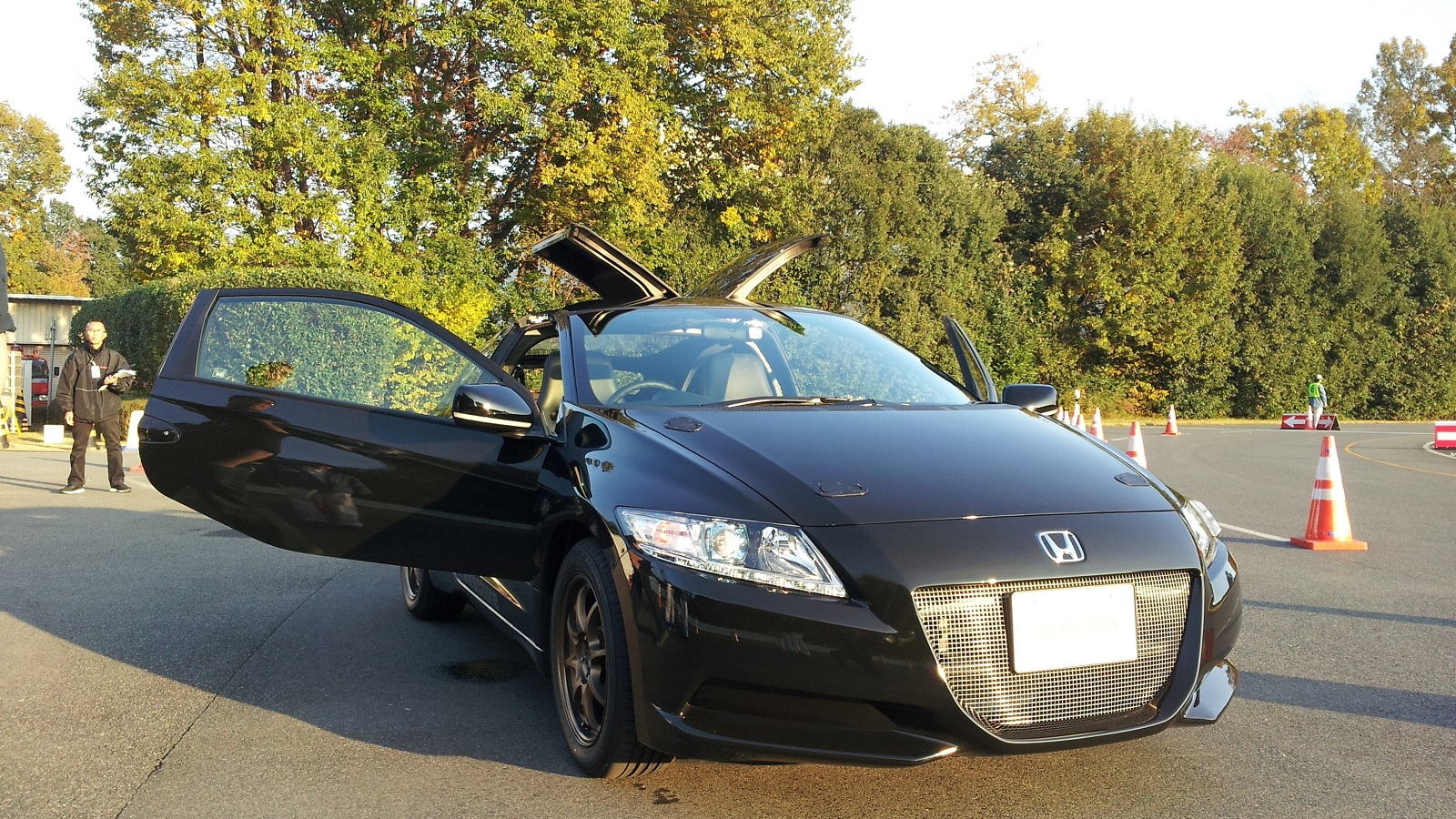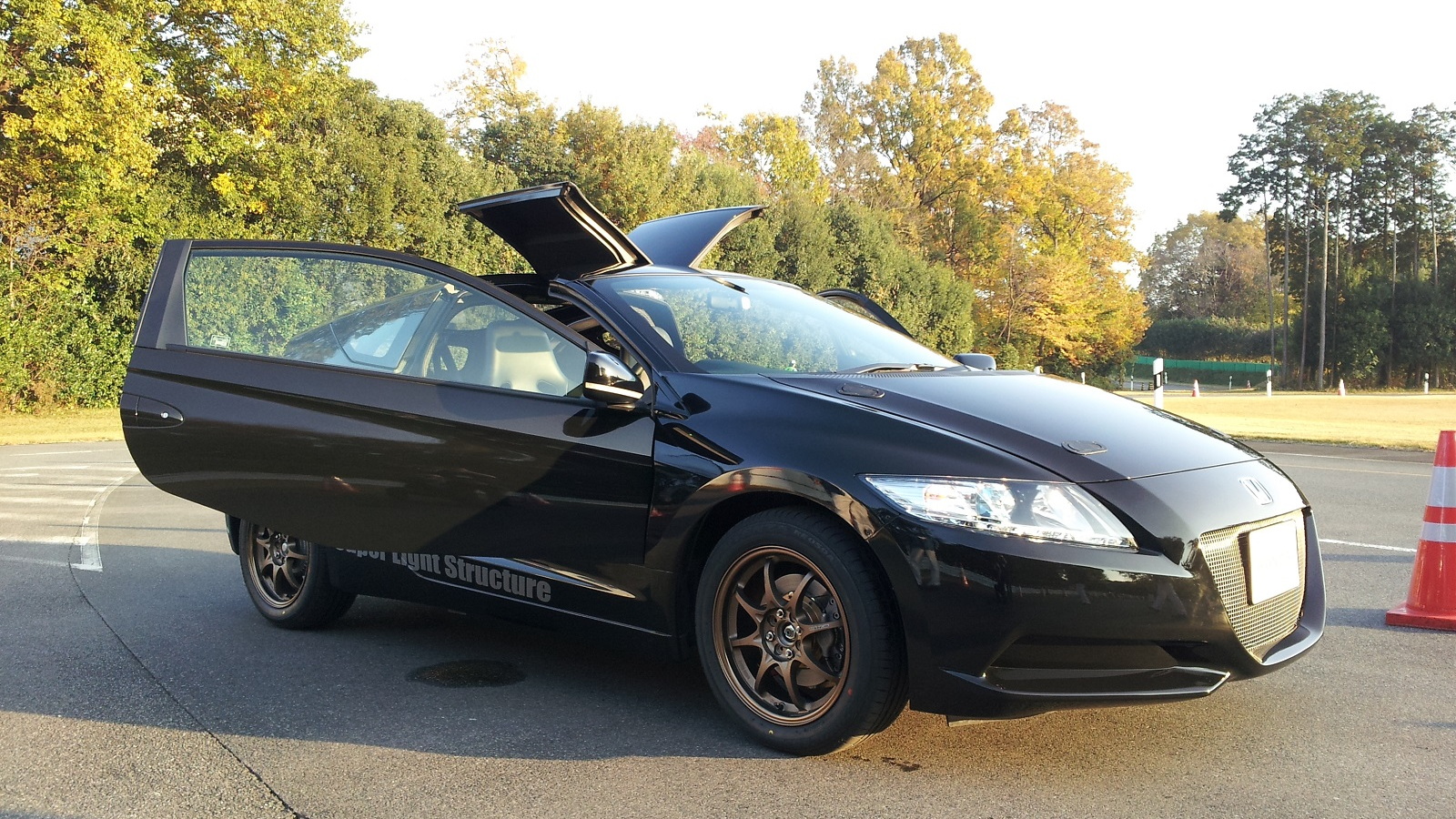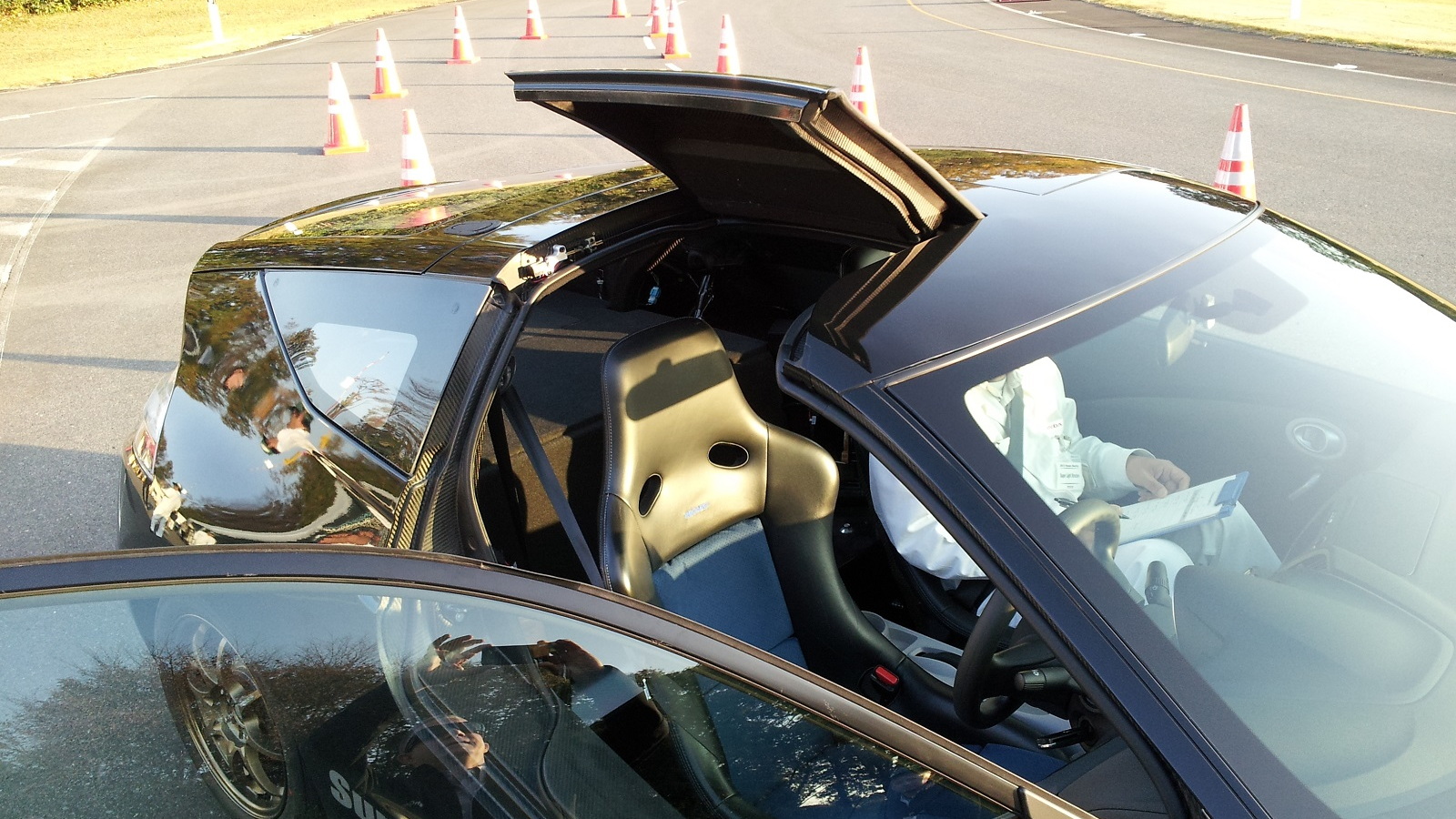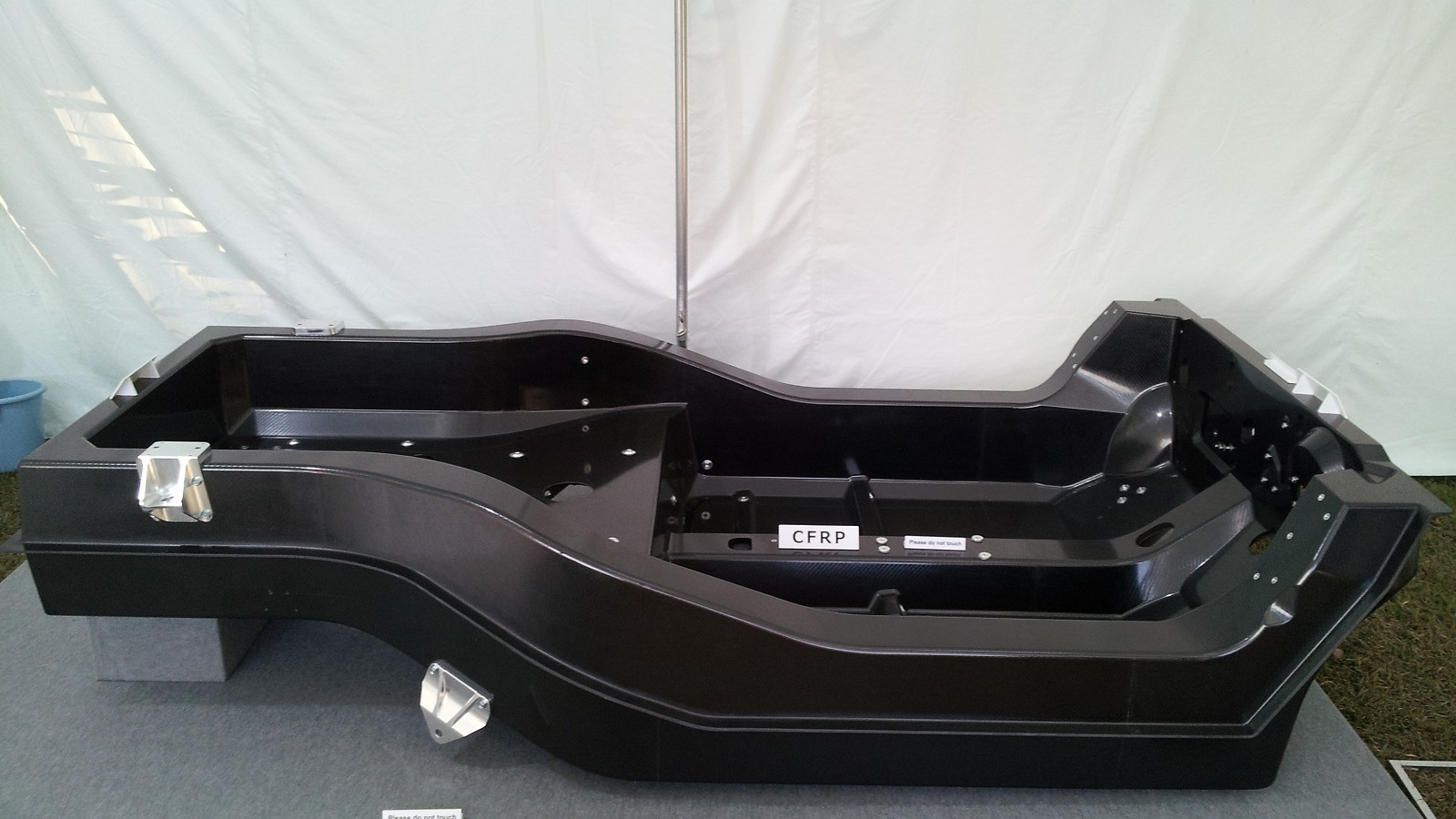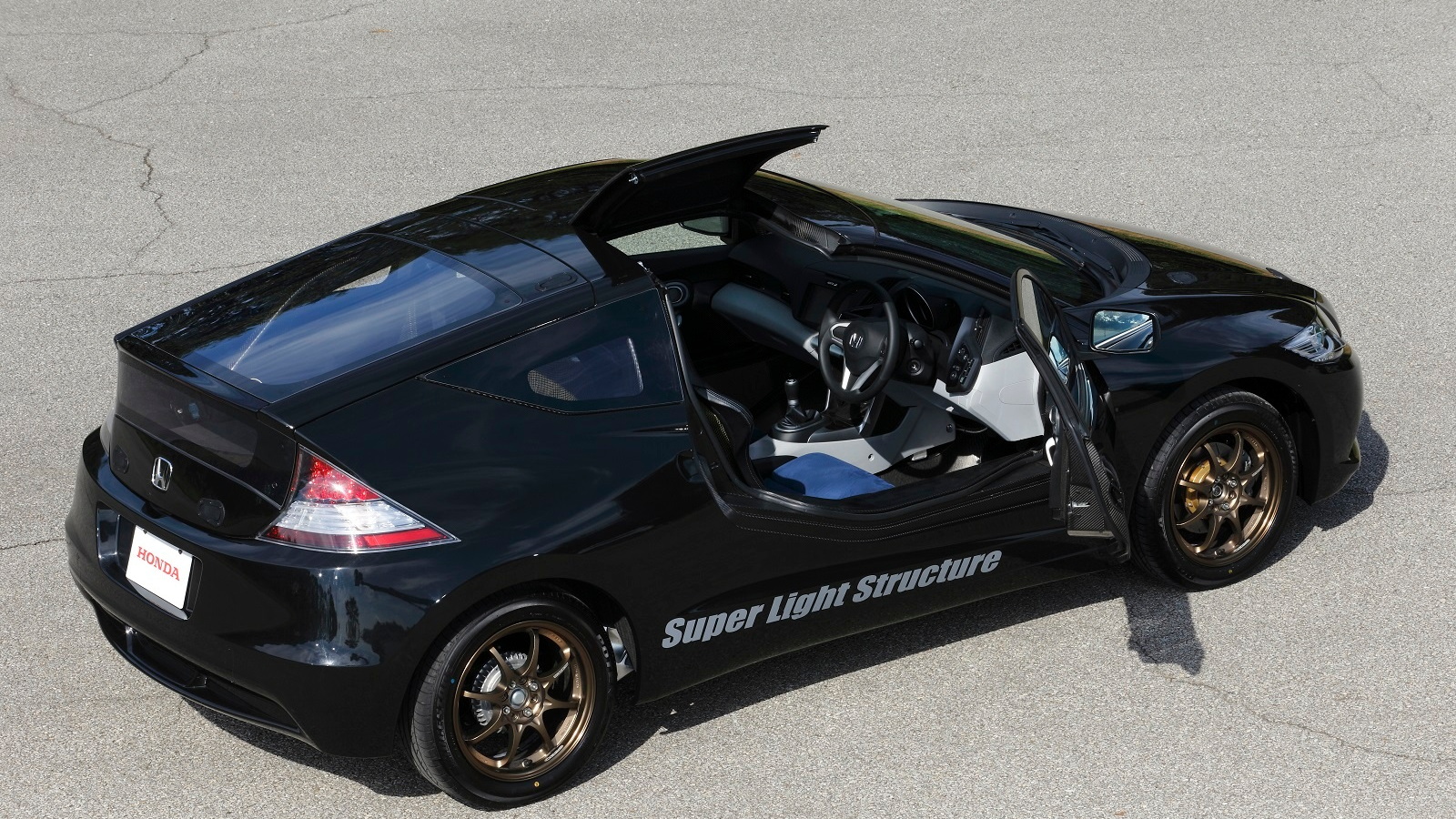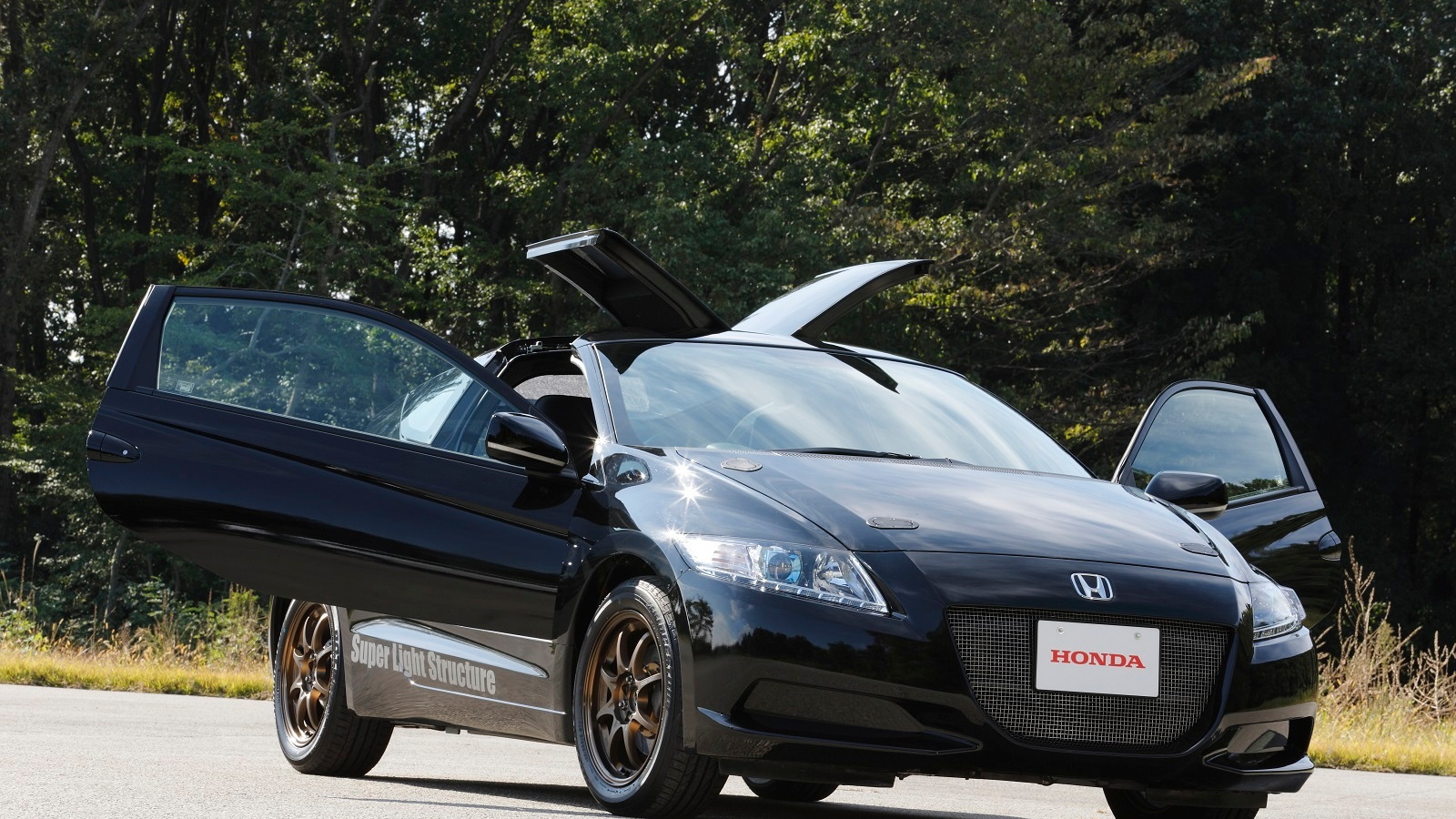But what you're looking at is no ordinary CR-Z hybrid two-seater. Instead, it's a one-of-a-kind prototype built from scratch around a carbon fiber reinforced plastic (CFRP) tub by Honda to test the effects of radically lighter body structures on a small car.

Prototype Honda CR-Z with carbon-fiber reinforced plastic body, Honda Proving Ground, Tochigi, Japan
MORE: Honda Civic Type R 2.0-Liter VTEC Turbo Prototype: Driven
Opening the right-hand driver's door on the prototype carbon-fiber CR-Z demonstrates just how tall the sills of the new tub are. It also has an unexpected side effect: The glass panel let into the roof rises with a whine, opening up more space to enter the car.
But getting into the car is a challenge unless you're built like a Formula 1 driver (meaning short and skinny). The sills are wide as well as high, and the molded racing seats sit below sill level.

Prototype Honda CR-Z with carbon-fiber reinforced plastic body, Honda Proving Ground, Tochigi, Japan
But a weight 30 percent lighter than the stock CR-Z transforms the car, from a small and mildly enjoyable car with a powertrain that strains into something that's much sportier and invites being thrown around curves.
We actually had to ask the engineers if the powertrain still had its hybrid component, because in our very short time behind the wheel, it wasn't at all evident.
Honda says the body of the lightweight CR-Z weighs just 1,760 pounds (800 kg), or 30 percent less than the standard vehicle's. That permitted Honda to lighten other components, including the brakes, wheel hubs, wheels, and steering system.
The result is acceleration from 0 to 62 mph in 8.3 seconds, or 30 percent less than a 2014 Honda CR-Z on sale today.

Prototype Honda CR-Z with carbon-fiber reinforced plastic body, Honda Proving Ground, Tochigi, Japan
The CR-Z's fuel efficiency rises by 20 percent, to a projected 40 miles per gallon on the EPA combined cycle. The current car comes in at 34 mpg when fitted with the same six-speed manual transmission as in the prototype.
MORE: 2014 BMW i3: First Drive Of BMW's Radical New Electric Car
For the moment, Honda says, the CFRP CR-Z is just a research exercise. What's needed, the company stresses, are ways to produce carbon-fiber structures at lower cost and in far higher volumes than the hand-crafting methods it used for the prototype.
Today, the leader in using CFRP to lighten vehicle structures is BMW, which plans to build up to 30,000 of its i3 battery-electric car each year.

2014 BMW i3 (German-market version), Amsterdam, Oct 2013
But while the BMW i3 is a sober, soothing car for mostly city and suburban use, the CR-Z two-seat hybrid coupe has always offered the promise of high fuel efficiency in a car with the spirit of the old and much beloved Honda CRX.
Our drive left us feeling that the carbon-fiber prototype comes much closer to fulfilling that promise than the underwhelming production CR-Z ever will.
Let's hope that the next CR-Z--if there is one--is a more developed version of the prototype we drove so briefly.
Honda provided airfare, lodging, and meals to enable High Gear Media to bring you this first-person report.
____________________________________________
